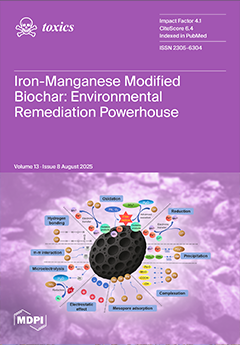Exposure to extreme temperature events (ETEs) and ambient fine particulate matter (PM
2.5) has been linked to an increased risk of pneumonia mortality, but their interactive effects remain largely unknown. We investigated 50,196 pneumonia deaths from 2015 to 2022 in Jiangsu province,
[...] Read more.
Exposure to extreme temperature events (ETEs) and ambient fine particulate matter (PM
2.5) has been linked to an increased risk of pneumonia mortality, but their interactive effects remain largely unknown. We investigated 50,196 pneumonia deaths from 2015 to 2022 in Jiangsu province, China, with a time-stratified case-crossover design. An individual-level exposure to heat wave, cold spell, and PM
2.5 was assessed at each subject’s residential address using validated grid datasets. Conditional logistic regression models integrated with a distributed lag nonlinear model were used to quantitatively estimate both independent and interactive effects. With different ETE definitions, the cumulative odds ratio (OR) of pneumonia mortality associated with heat wave and cold spell ranged from 1.22 (95% confidence interval [CI]: 1.14, 1.31) to 1.60 (1.40, 1.81), and from 1.08 (1.002, 1.17) to 1.18 (1.01, 1.38), respectively, while the OR for PM
2.5 ranged from 1.013 (1.006, 1.021) to 1.016 (1.009, 1.024). We observed a synergistic effect (relative excess risk due to interaction [RERI] ranging from 0.40 [0.06, 0.76] to 1.16 [0.41, 2.09]) of co-exposure to heat wave and PM
2.5, as well as an antagonistic effect (RERI ranging from −0.20 [−0.40, −0.03] to −1.02 [−1.78, −0.38]) of co-exposure to cold spell and PM
2.5 on pneumonia mortality. It was estimated that up to 6.49% of pneumonia deaths were attributable to heat wave and PM
2.5 exposures. We found that heat wave and cold spell interacted oppositely with PM
2.5 to increase the odds of pneumonia mortality, highlighting the needs to reduce co-exposures to heat wave and PM
2.5.
Full article






